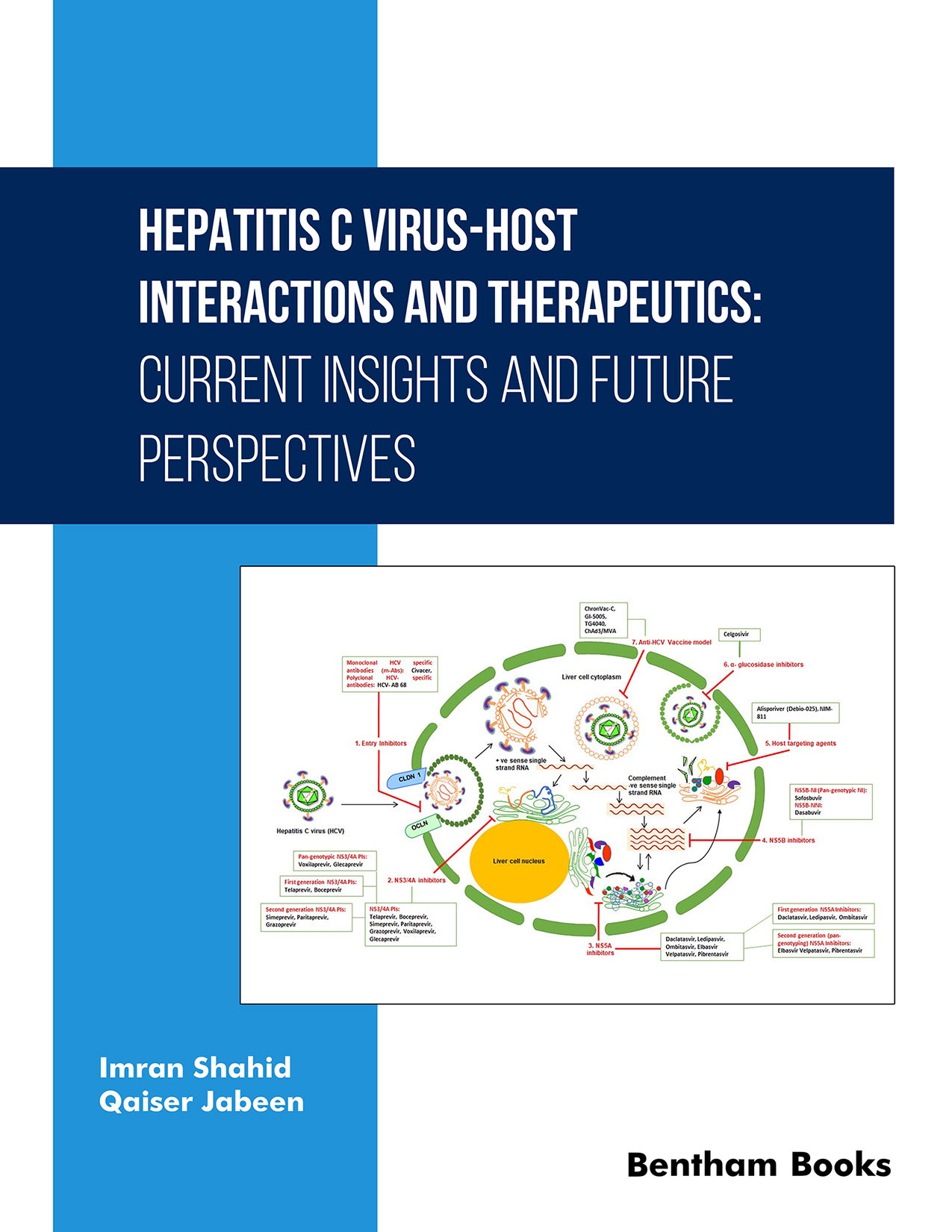Virus-host interactions (dependencies) and their intricate interplay are always
phenomenal and of paramount interest to investigate molecular epidemiology and
pathogenesis of all viral infections. However; complex cross-talks between hepatitis
C virus (HCV) and host cells involving a plethora of genes and cell signaling
pathways leading asymptomatic acute hepatitis C infection to chronic hepatitis C
(CHC) and further durable, sustained, and insidious extrahepatic manifestations are
still mysterious, murky, inconclusive, and even more, remains to elucidate. The
world has always seen paradigms in HCV infection biology and therapeutics since its
discovery in the late 1980s by gene cloning methods instead of the use of
conventional tissue culture, or classical virological techniques. We can say that
the world could not be able to see this revolutionary advancement in molecular
biology techniques, state-of-the-art diagnostic tools, sophisticated protocols of
clinical trials, astute knowledge of molecular drug targets, and serendipitous
design and development of drug molecules without HCV discovery that once labeled as
the ‘silent epidemic’ afflicting even more than 58 million peoples
around the globe nowadays. Before the advent and approval of all oral
interferon-free direct-acting antivirals, the gold standard of care, a combination
therapy including pegylated interferon plus ribavirin achieved sustained clearance
of HCV and subsequent improvements in liver disease in only 60% of treated patients.
It has been a long haul, a big haul, but we’ve made it with the current
landscape of HCV therapeutics to cure harder-to-treat special HCV subpopulations
including cirrhotic, decompensated cirrhotic, HCV/HIV or HCV/HBV co-infections, and
liver transplant or post-transplant patients with virus recurrence. Despite oral
direct-acting antivirals having started to bear fruit in real-world clinical
settings against HCV, unmet challenges, barriers, and hurdles in HCV diagnostics and
treatment accessibility still prevail that need to surmount and overcome to reduce
the global healthcare burden of HCV and to achieve WHO striving goal of HCV
elimination by 2030.
This thought-provoking book tends to cover a comprehensive and up-to-date overview of
the latest advancement in HCV infection biology, perplexing molecular clinical
pathology, novel diagnostic tools, fortuitous anti-HCV therapeutic options on the
horizons, management of difficult-to-treat subpopulations, and imperative
compensatory therapies against hepatitis C infection in the late stage of their
development. The book intends to cover the latest guidelines issued by the US FDA,
AASLD/IDSA (American Association for the Study of Liver Diseases/Infectious Diseases
Society of America), ECDC (European Center for Disease Prevention and Control), and
NYSDOH-AI (New York State Department of Health Aids Institute) on HCV screening,
diagnosis, treatment and management for the clinicians, physicians, infectious
disease experts, and primary care providers (nurses and paramedics). The contents of
the book not only provide ABC of HCV infection, diagnostic tools, and treatment
strategies to common and interested readers but also address current information
about some pretty mind-boggling aspects of hepatitis C biology, immunology,
pharmacology, therapeutics, and vaccinology to obtain relevant answers with
thoughtful explanations of some outstanding problems in the field nowadays. The book
also covers up-to-date guidelines about patient screening, treatment protocols, and
optimization of therapy in real-world clinical settings.
The book also summarizes unanswered questions currently faced by investigators in the
intriguing molecular pathogenesis of CHC in humans, and physicians, clinicians,
hepatologists, and healthcare officials are concerned with HCV clinical diagnosis
and therapeutics. I hope that this book
will also be a valuable addition to hepatology for curious
undergraduate and postgraduate students pursuing a new career in HCV medicine or
newcomer in hepatitis C research to broaden their knowledge and gain a wide
perspective of the field. The multi- and interdisciplinary presentation of
information in this book would open a new school of thought for postdoctoral fellows
to search for new horizons and milestones in hepatitis C research. The book closes
while shedding light on remarkable and amalgamated efforts by the World Health
Organization (WHO), health policymakers, and public healthcare providers to a proper
ending of this ‘silent epidemic’ from the world by 2030.
Both authors of the book (Imran Shahid and Qaiser Jabeen) are agile, bright, and very
active investigators in the concerned field of hepatitis C research with more than
10 and 20 years of experience respectively. I wish that this web-based, as well as
hard copy format book, would rapidly become an international referral and guideline
in hepatitis C infection biology, diagnostics, and therapeutics.
Sajida Hassan
Senior Research Scientist III
Viral
Hepatitis Program, Laboratory Medicine
University of Washington
Seattle, WA, USA

